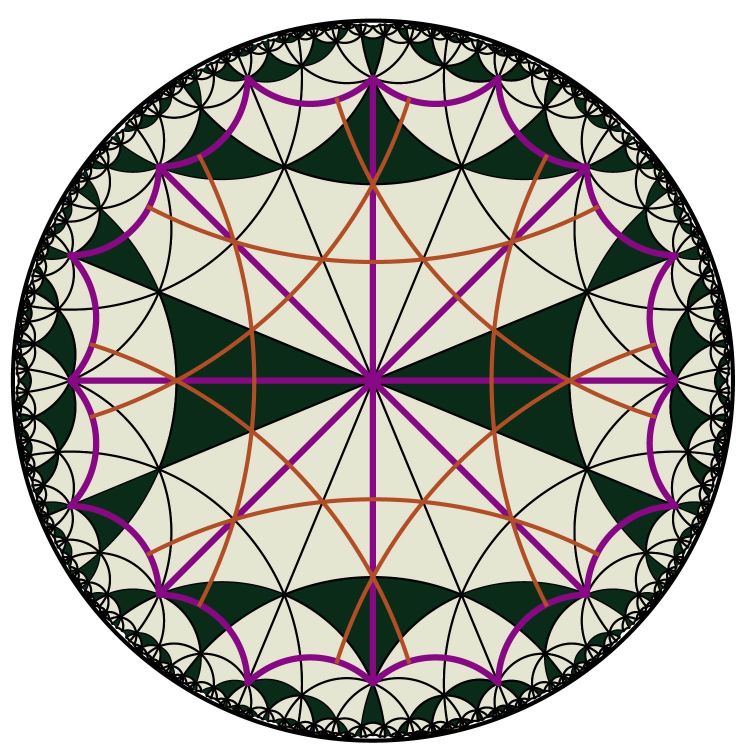Today we look at the Fermat equation as a subset of the complex projective plane, where it becomes an algebraic curve, or Riemann surface Q of genus 3. This has many advantages: For instance, we see that there are many automorphisms (96 in total) coming from permuting the coordinates or multiplying them with powers of i.

Our first goal is to visualize Q so that we retain as many symmetries as possible. A standard approach is through uniformization: Any compact Riemann surface of genus > 1 has a unique hyperbolic structure, and the holomorphic automorphisms of the Riemann surface fully survive as hyperbolic isometries.

To find this hyperbolic structure, note that the defining equation implies that the function y/x represents the surface as a 4-fold branched cover over the Riemann sphere, branched over four points that can be chosen as the fourth roots of unity. Such a sphere can be represented by taking two squares and gluing them together along their edges. This means that Q will be tiled by 8 squares, so that they all fit round any of the four vertices. While Euclidean squares don’t like this, we can use hyperbolic 45 degree squares.

The top image shows the tiling of the hyperbolic plane by such squares, together with the dual tiling by right angled regular octagons outlined in yellow. The second image shows just the eight squares that constitute the surface, and the red geodesics indicate the identifications needed to get the closed surface Q.

This tiling by eight squares (as well as the dual tiling by four octagons) is platonic in the same way that a cube is platonically tiled by six squares: The symmetries of the surface act transitively on flags (i.e. point-edge-face chains). This is already pretty but not the end. The octagons of the dual tiling can be each subdivided into eight 45 degree equilateral triangles that also tile the surface platonically. The 12 vertices of these 32 triangles happen to be the Weierstrass points of Q (3rd figure).

The identifying geodesic zigzag through these smaller triangles as Petrie polygons, and close on Q always after passing through six triangles. Moreover, one can decompose the tiled hyperbolic plane into ribbons (4th figure) consisting of such triangle chains. What is left are triangles that only meet at vertices. On Q, one has fours such ribbons and eight isolated triangles. Because the ribbons close after six triangles, it is tempting to represent them by the six equatorial triangles of an octahedron in Euclidean space. Doing this while gluing in the isolated triangles results in exactly the same triply periodic polyhedral surface we constructed last time. That means that the Fermat quartic Q is conformally isomorphic to the quotient of that triply periodic polyhedron divided by its lattice translations. This was dense today. More details are in Dami’s paper.
How do you draw these beautiful pictures?
LikeLike
I wrote a Mathematica package for drawings in the hyperbolic plane. I use that, export as vector graphics, and tweak with Adobe Illustrator
LikeLiked by 1 person
Thanks!
LikeLike
What about the 3D shapes in Euclidean space? Mathematica or POV ray?
LikeLike
The are done just in PoVRay. However, I often prototype things in Mathematica and then code it again in PoVRay.
LikeLike